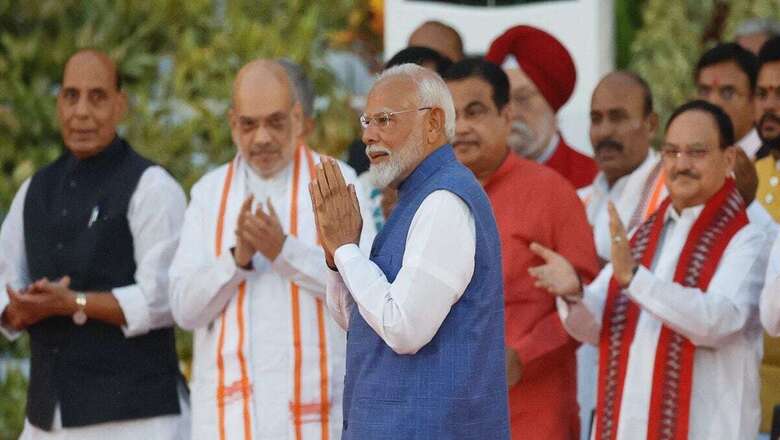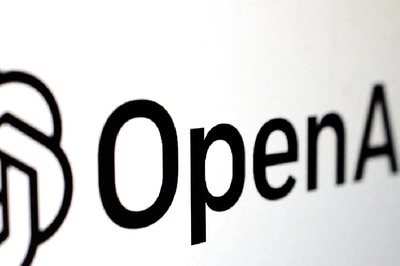
views
The reactions to these were also divided on two lines. First, the pro-BJP camp realised that their fear of losing the ‘edge’ in government was premature. Second, the anti-BJP camp realised that BJP’s partners – TDP and the JD(U) – were not going to bat on behalf of the Opposition while in government. As a result, much of their initial euphoria over the results dissipated as soon as the ministerial allocations were revealed, since it became clear that not much was going to change.
Since 2014, the Modi government has carved an image of being decisive and unapologetic about not just its policy decisions, but also its ideology. Its supporters grew fond of the idea of one party dominating the Central government for the larger good of the nation. For a developing country like ours, a strong and stable government is an absolute necessity. This is not the time for coalition politics to damp down the Centre’s ability to take big decisions and reform the country. Be that as it may, the verdict of June 4 was not as decisive as either the BJP or its supporters had hoped it would be.
That brings me to the anti-BJP camp and the INDIA bloc. After the results, this camp was convinced that the ground had slipped from under PM Modi’s feet and that he would now be entirely beholden to the likes of Nitish Kumar and Chandrababu Naidu. Their distinguished history of flip-flops convinced many that the “NDA sarkar” would mostly be operating on borrowed time.
The INDIA bloc was convinced that this would translate into them taking hold of the reins of power sooner rather than later. Even today, Narendra Modi is not considered a legitimate prime minister by this alliance, which is evident from the fact that the top Opposition leaders have not congratulated him for taking oath for a record third time – a feat which so far was Jawaharlal Nehru’s alone.
As the list of Union Council of Ministers was announced, much of the INDIA bloc’s bluster fell flat on its face as the BJP retained all the consequential portfolios. The “big 4” ministries, namely home, defence, finance and external affairs continue to be held by the BJP. In fact, there is no change in the composition of the Cabinet Committee on Security (CCS) whatsoever. Amit Shah, Rajnath Singh, Nirmala Sitharaman and Dr S Jaishankar were all members of the CCS even in Modi 2.0. They continue to be members of the CCS in Modi 3.0 as well.
All that talk of BJP’s alliance partners demanding at least two of the top four portfolios, apart from Amit Shah’s ouster from government, turned out to be just that – unfounded gossip. In fact, there was speculation that Modi would even have to make Nitish Kumar the deputy prime minister. As is evident now, both Chandrababu Naidu and Nitish Kumar are satisfied with what they have been given. Do not be surprised if the BJP also gets a Speaker of its choice in the Lok Sabha, despite the TDP wanting the same for itself.
Let us now turn our attention to Babu and Kumar. It does not take a genius to figure out that both these leaders are in the fag-end of their political careers. One could argue that the stakes for them are much higher. Nitish Kumar faces incredible anti-incumbency in Bihar, and is hoping that the Centre’s financial package for the state will help him revive the JD(U)’s dwindling fortunes. If Nitish Kumar is to run a successful government for the remainder of his tenure, he needs Prime Minister Modi and the Central government on his side.
Besides, Tejaswi Yadav has emerged as a force to reckon with in Bihar, and stopping the RJD’s juggernaut in the state Assembly election next year is not something that Nitish Kumar can do alone. For that, he needs the BJP on his side. Yes, Kumar is one politician whose next move can never be predicted. However, the stakes for him are much higher now, especially in Bihar. If there is something that has emerged from these Lok Sabha polls in Bihar, it is that Tejaswi Yadav is now the frontrunner to become a non-BJP chief minister – at least in the popular imagination.
If Nitish Kumar were to ally with the RJD again, it is unlikely he will be bestowed with the chief ministership. The INDIA bloc would, therefore, be well-advised not to wait for the day of Nitish Kumar’s latest “palti” to arrive, as his era of reversals may finally be over.
Chandrababu Naidu, it would appear, is one of those partners the BJP can be a bit more confident about. All that Naidu wants is to write his legacy in golden letters, and for tales to be told about how he developed Andhra Pradesh. He, like Nitish Kumar, is slated to get a handsome financial package for Andhra Pradesh. His primary focus is his state, and even there, developing Amravati on the lines of Hyderabad to further reinforce his image as a “CEO CM” remains the top priority. For this, he needs all the help from the Centre that he can possibly get.
Without an absolute majority of its own, the BJP is likely to give Naidu whatever he wants for Andhra Pradesh. The underlying understanding is that Naidu, in exchange, does not force Narendra Modi’s hands in central matters.
Expect No Fundamental Change in Modi’s Governance
Narendra Modi’s political career did not start when he became chief minister of Gujarat in 2001. In fact, prior to it, he had the opportunity to navigate the workings of coalition governments in states like Gujarat, Haryana and Jammu and Kashmir. His experience as a troubleshooter from his days as a BJP karyakarta, its organisation secretary in Gujarat, and then as the party’s national secretary is about to come in handy until 2029.
Out of the 72 Union ministers that have been sworn in, 59 belong to the BJP while 13 belong to all other NDA partners. That in itself is a tell-tale sign of how PM Modi sees the new government. For all practical purposes, this is still a government dominated by the BJP. The only difference now is that the BJP will have to keep its alliance partners in the loop on all important policy matters, barring national security. That is something the prime minister can easily live with.
Besides, there is a consensus within the NDA that Modi 3.0 must act as a government in continuum, which is to say that no allies are averse to either economic reforms or the BJP’s developmental agenda. On matters like UCC and One Nation One Election too, there are signs that both the TDP and JD(U) will be onboard without breaking much sweat.
The only challenge for the BJP now is parliament, where the Opposition numbers, led by the Congress, have swelled. Parliament’s functioning will undoubtedly see a marked change from what we have witnessed over the past 10 years – and that is a good thing. However, it will only remain a good feature of this year’s election if the Opposition does its job well and does not make disruptions and borderline parliamentary hooliganism its mainstay for the next five years.
As far as governance goes, it is continuity all the way. That is what the BJP’s dominance of ministerial portfolios and PM Modi’s decision to retain all important ministers signifies. Instability, wanton compromise and policy paralysis are terms which remain alien to PM Modi’s dictionary today just as they were before June 4.
Views expressed in the above piece are personal and solely those of the author. They do not necessarily reflect News18’s views.



















Comments
0 comment